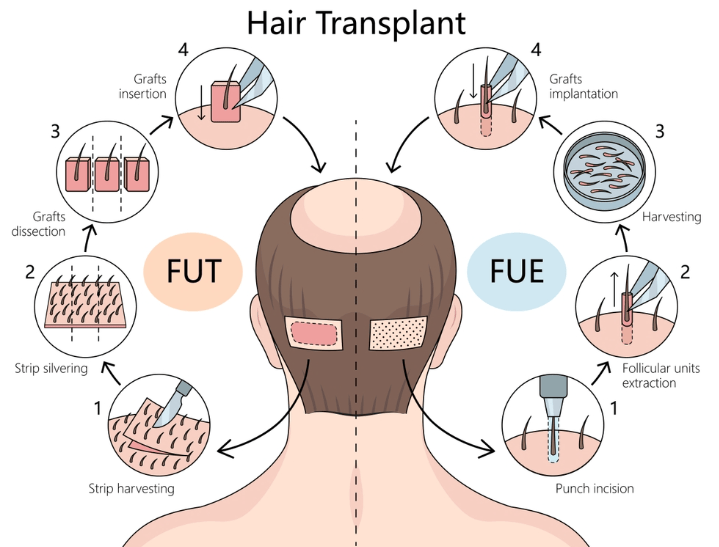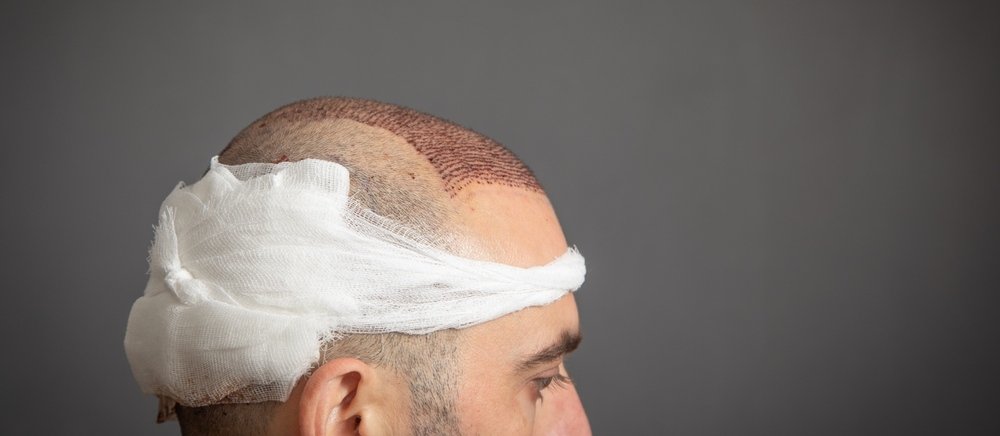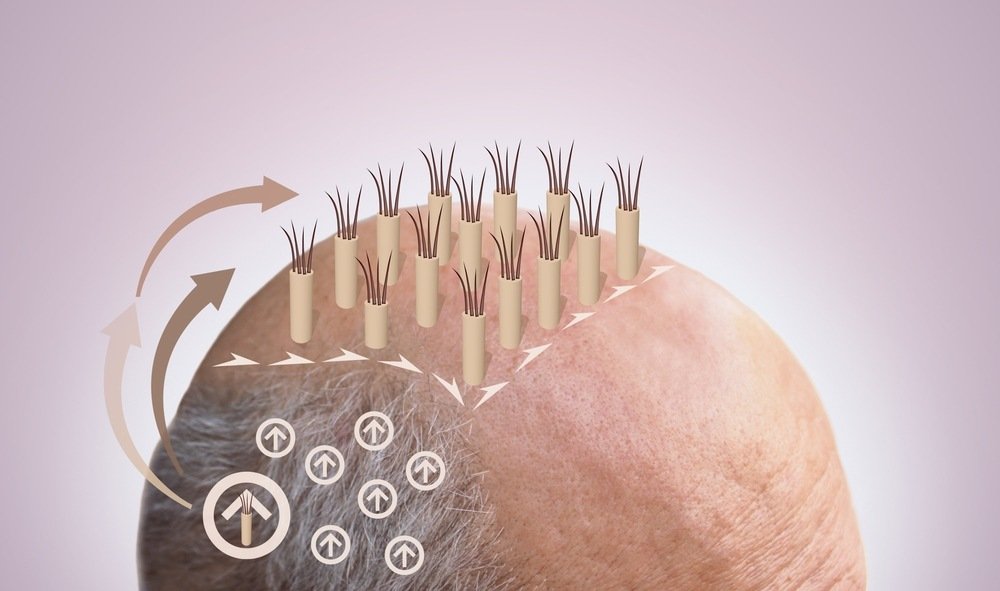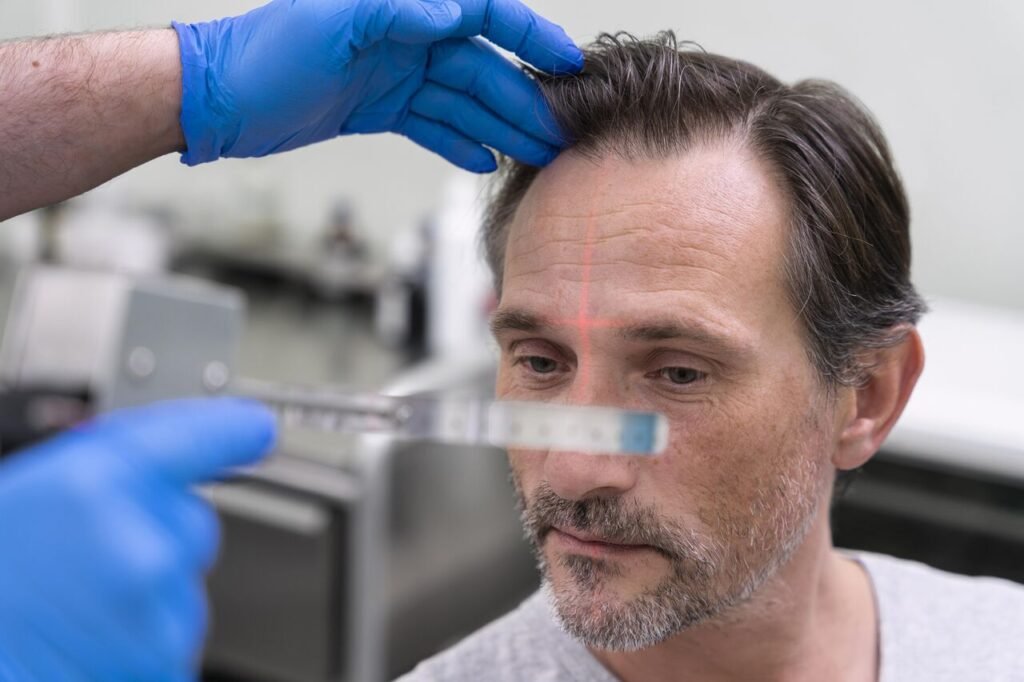A hair transplant is a simple process where a doctor extracts healthy hair from one part of your head and carefully moves it to areas where you’ve lost hair. This helps fill in bald spots or fix a receding hairline.
Doctors have been performing hair transplants in the U.S. since the 1950s, but their methods have improved greatly over the years. Today’s techniques look much more natural and give better, longer-lasting results.
Who Performs Hair Transplant Surgery?
A dermatologist or a plastic surgeon performs hair transplants. These cosmetic surgeries restore hair and change how you look. Plastic surgeons are skilled at working with delicate tissues and making the hairline look natural.
- Hair Transplant Surgeons: Some doctors call themselves “hair transplant surgeons.” These are often dermatologists or plastic surgeons who focus only on hair transplants. They have extra experience and may run clinics dedicated to hair restoration.
- Technicians or Assistants: During surgery, the doctor is helped by a team of trained technicians. These assistants prepare the hair grafts (tiny pieces of hair and skin) and help place them in the scalp. However, the doctor is the one who plans and leads the surgery.
- Trichologists (not surgeons): Trichologists study hair and scalp health but are not medical doctors. They can diagnose hair loss but cannot perform surgeries. They might work with doctors to plan your treatment.
Types of Hair Transplants
There are 3 main types of hair transplants.
1. Follicular Unit Transplantation (FUT)
2. Follicular Unit Extraction (FUE)
3. Direct Hair Implantation (DHI)

1. Follicular Unit Hair Transplantation (FUT)
- A strip of skin with hair is removed from the back of the head.
- The strip is divided into tiny grafts (groups of 1-4 hairs).
- These grafts are placed in the bald areas.
Why is FUT popular?
- Good for people who need many grafts at once.
- Less expensive than other methods.
Why do some avoid FUT?
- Leaves a linear scar.
- Longer recovery time.
2. Follicular Unit Hair Extraction (FUE)
- Individual hair follicles are taken from the donor area.
- Tiny holes are made in the bald area, and follicles are placed there.
Why is FUE popular?
- No visible scars.
- Faster healing.
- Looks more natural.
Why do some avoid FUE?
- More expensive.
- Takes longer if many grafts are needed.
3. Direct Hair Implantation (DHI)
A modern version of FUE where a special pen-like tool is used to implant the hair directly.
- Precise placement
- Expensive, but gives natural-looking results
DHI is costly and takes longer, so not everyone can afford it.
How a Hair Transplant Works
A hair transplant is like planting new grass in a bare spot on your lawn. It has two main steps: taking hair (called harvesting) and planting hair (called implantation).
Step 1: Taking Hair (Harvesting)
This is when the doctor collects healthy hair from a part of your head that has lots of it, usually the back. This area is special because the hair there doesn’t fall out easily. It’s like picking the best apples from a tree to share with others! There are two ways doctors do this.
Method 1: Follicular Unit Strip Surgery (FUSS)
The doctor takes a small strip of skin from the back of your head, where hair grows strong. This strip has lots of hair on it. Then, they carefully cut the strip into tiny pieces called grafts. Each graft has a few hairs, like a little bundle of grass.
Method 2: Follicular Unit Extraction (FUE)
Instead of taking a strip, the doctor uses a tiny tool (like a mini cookie cutter) to pick out individual hair grafts one by one from the back of your head. It’s like picking flowers carefully from a garden without digging up the whole plant.
Step 2: Planting Hair (Implantation)
Once the doctor has enough Hair grafts, they’re ready to plant them where hair is missing, like on the top of your head. Here’s how:
The doctor uses a small tool to make holes in the bald or thin spots. These holes are super small, like poking a pencil tip into the ground. Then, they gently place one graft in each hole, like planting a seed in soil. They ensure the hair points correctly to look natural, just like your other hair.
After planting, the grafts settle in, and new hair starts growing in a few months. It’s like watching new grass sprout in your garden!
Hair Transplant Cost
Hair transplant cost can vary a lot. It mostly depends on how much hair you need moved and your doctor’s method. On average, prices range from $4,000 to $15,000, and most health insurance doesn’t cover it.
💡 Curious about detailed pricing, hidden costs, and money-saving tips?
👉 Read my full blog on Hair Transplant Costs here!
Hair Transplant Side Effects
Like any surgery, a hair transplant can have some side effects. They are mostly mild and go away, but it’s good to know what might happen.
Possible Side Effects:
🩸 A little bleeding where the hair was moved
🦠 Infection — but doctors can give medicine to help
💨 Scarring — sometimes small marks are left
🤔 Hair might look a little unnatural if not done properly
Other Things to Know:
When new hair grows, some people experience a small problem called folliculitis. This means the tiny hair roots become red, swollen, or irritated. It looks like little pimples, but can be treated easily with medicine or warm compresses.
Some people also lose some of their old hair near the transplant area. This is called shock loss, but don’t worry—in most cases, that hair grows back.
Talk to Your Doctor First
It’s always smart to talk to your doctor about these risks. They can explain everything clearly and help you decide if a hair transplant is right for you.
Hair Transplant Expected Results
- Natural hairline
- Thicker hair
- Boosted confidence
- No need for wigs or caps
- Hair grows like normal hair
Step-by-Step: How Does a Hair Transplant Work?
- Consultation – You meet the doctor and discuss your hair loss.
- Check-Up – The Doctor checks your scalp and hair.
- Planning – The Doctor designs where to plant the hair.
- Surgery Day – Hair is removed and planted in bald spots.
- Recovery – You go home the same day, rest for a few days.
Results – New hair grows naturally over months.
What Are the Signs of Hair Transplants Gone Wrong?
As with any type of surgery, hair transplants don’t always work out as planned. Some signs that your hair transplant has gone wrong include:
- Poor growth of transplanted hair
- A weird-looking hairline
- Visible scars on the scalp
- Dead skin (called scalp necrosis)
- The incision wound has opened up
When to Call a Doctor
If you have a hair transplant and develop any of these symptoms, contact a doctor as soon as possible:
- Heavy bleeding
- Wound incision opening
- A rash, skin bumps, or cysts (signs of infection)
- Skin that has turned a dusky colour and is crusty
- Swelling in your face, which may be accompanied by hives and difficulty breathing (anaphylaxis)
Final Thoughts
Hair transplants are a cool way to fix hair loss. They help you grow new hair and feel awesome. FUE is the favourite because it’s quick and leaves tiny scars. But it’s a big step, so learn and talk to a doctor. You can say hello to a happier, hairier you with a transplant!
Ready to learn more? Ask your doctor or search for trusted clinics near you. Your new hair could be just a step away!
Hair Transplant FAQs
1. How long do hair transplants last?
A hair transplant is intended to last as long as you do — that is, they’re supposed to be permanent. However, research suggests that a small number of transplanted hairs may not survive and will fall out.
2. How painful are hair transplants?
Your doctor will give you anesthesia to make your scalp numb before the procedure, so a hair transplant should not be painful.
3.How to ensure the best results after a hair transplant?
Follow all of your doctor’s instructions for at-home care for the best result. Your doctor may instruct you to use medicine that prevents hair loss after surgery, as your existing hair may continue to fall out or become thinner.
4. What is the hair transplant success rate in the U.S.?
The success of a hair transplant depends on several factors, including the skill of the surgeon and how much hair you have transplanted. Data on success rates of hair transplants in the U.S. are not available. However, in a 2022 survey of surgeons from around the world, 68% said they typically require only one procedure to produce a successful hair transplant. But you may need to have more than one procedure to get the look you want.



